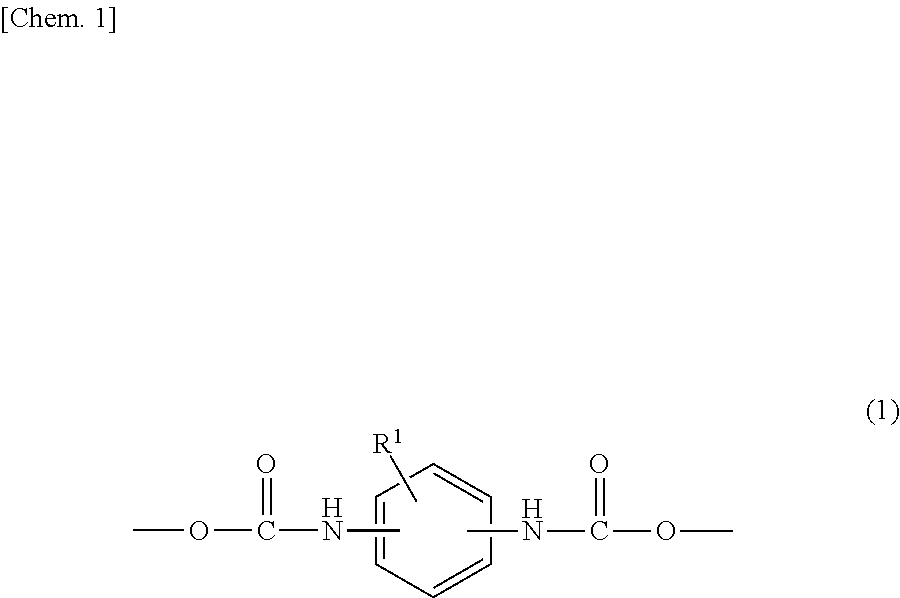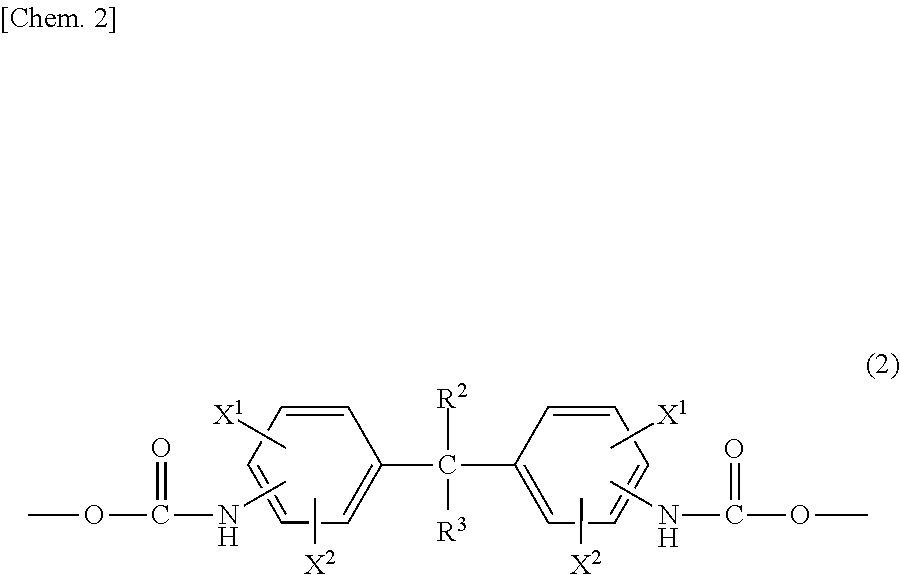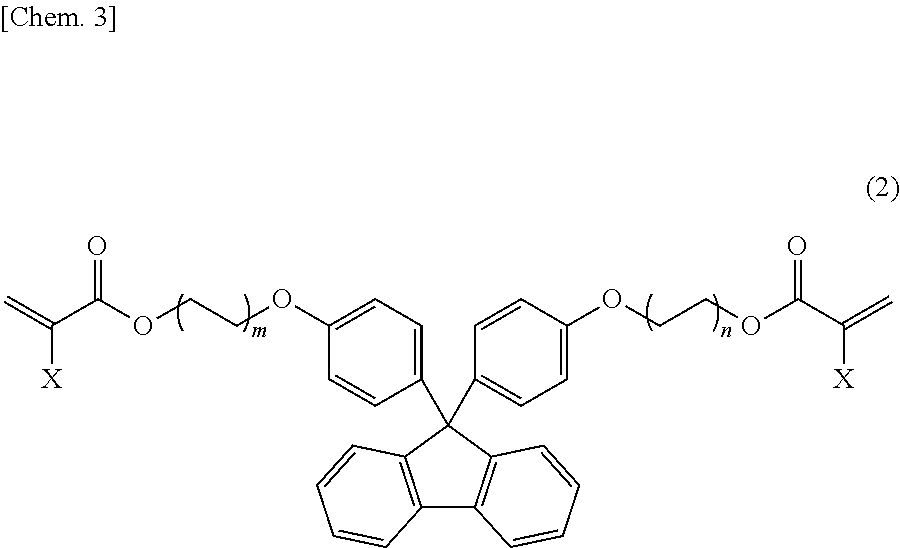Urethane (METH)acrylate resin, curable resin composition, cured product thereof, and plastic lens
a technology of urethane acrylate and acrylate, which is applied in the direction of instruments, optical elements, coatings, etc., can solve the problems difficult forming into optical components, and insufficient refractive index, and achieve low viscosity of resin itself. , the effect of high refractive index
- Summary
- Abstract
- Description
- Claims
- Application Information
AI Technical Summary
Benefits of technology
Problems solved by technology
Method used
Image
Examples
example 1
[0077]After introducing 174.2 g (1 mol) of tolylene diisocyanate, 250.3 g (1 mol) of 4,4′-diphenylmethane diisocyanate, 1,035 g of o-phenylphenoxyethyl acrylate, 2,000 ppm of 3,5-ditertiary butyl-4-hydroxytoluene, 200 ppm of methylhydroquinone, and 350 ppm of tin octanoate into a 5-liter flask provided with an agitator, a gas inlet tube, a condenser, and a thermometer, 232.2 g (2 mol) of 2-hydroxyethyl acrylate was gradually dropped, and subsequently the temperature was raised to 80° C. so as to develop a reaction for 2 hours. Then, 378 g (1 mol) of bisphenol AP-ethylene oxide 2-mol adduct was added in fractions over 1 hour. After the whole amount was added, a reaction was developed at 80° C. for 4 hours until an infrared spectrum, which indicated an isocyanate group, at 2250 cm−1 disappeared so as to produce a composition including urethane acrylate resin (A-1) and a diluent. The composition of the raw material monomer and the refractive index and the viscosity of the resulting res...
example 2
[0078]After introducing 174.2 g (1 mol) of tolylene diisocyanate, 250.3 g (1 mol) of 4,4′-diphenylmethane diisocyanate, 1,013 g of o-phenylphenoxyethyl acrylate, 2,000 ppm of 3,5-ditertiary butyl-4-hydroxytoluene, 200 ppm of methylhydroquinone, and 350 ppm of tin octanoate into a 5-liter flask provided with an agitator, a gas inlet tube, a condenser, and a thermometer, 232.2 g (2 mol) of 2-hydroxyethyl acrylate was gradually dropped, and subsequently the temperature was raised to 80° C. so as to develop a reaction for 2 hours. Then, 356 g (1 mol) of bisphenol Z-ethylene oxide 2-mol adduct was added in fractions over 1 hour. After the whole amount was added, a reaction was developed at 80° C. for 4 hours until an infrared spectrum, which indicated an isocyanate group, at 2250 cm−1 disappeared so as to produce a composition including a urethane acrylate resin. The composition of the raw material monomer and the refractive index and the viscosity of the resulting resin composition are ...
PUM
| Property | Measurement | Unit |
|---|---|---|
| Temperature | aaaaa | aaaaa |
| Viscosity | aaaaa | aaaaa |
| Viscosity | aaaaa | aaaaa |
Abstract
Description
Claims
Application Information
 Login to View More
Login to View More - R&D
- Intellectual Property
- Life Sciences
- Materials
- Tech Scout
- Unparalleled Data Quality
- Higher Quality Content
- 60% Fewer Hallucinations
Browse by: Latest US Patents, China's latest patents, Technical Efficacy Thesaurus, Application Domain, Technology Topic, Popular Technical Reports.
© 2025 PatSnap. All rights reserved.Legal|Privacy policy|Modern Slavery Act Transparency Statement|Sitemap|About US| Contact US: help@patsnap.com



